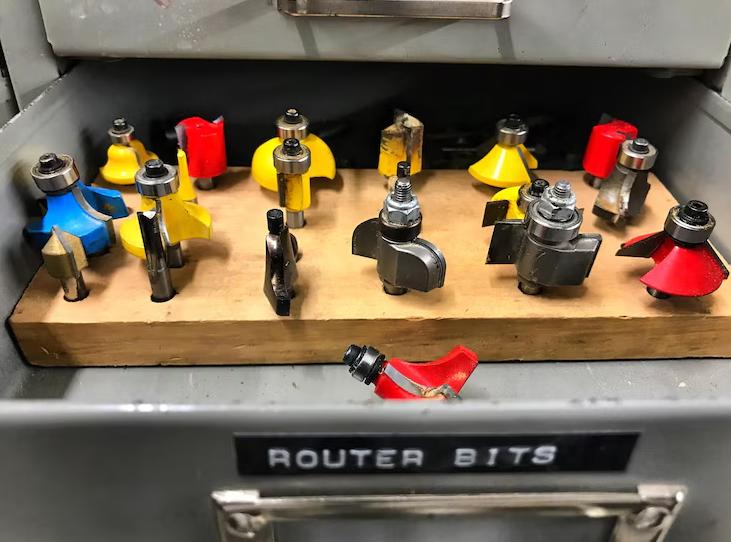Whether you’re a novice woodworker or a seasoned professional, selecting the right cutting tools is essential to achieving clean, precise results. Router bits are among the most versatile tools in any workshop, capable of shaping edges, cutting joints, and creating decorative profiles.
Understanding their types, proper usage, and care requirements can help you make the most of your equipment and extend its lifespan.
Types of Router Bits
Router bits come in a wide variety of shapes and sizes, each designed for a specific function. Common types include straight bits for cutting grooves and dados, flush trim bits for copying templates, and round-over bits for smooth, curved edges. More specialised options like dovetail or rabbeting bits allow for precise joinery and complex woodworking tasks. Choosing the right bit depends on the material you’re working with and the cut you intend to make.
Shank Size and Compatibility
Router bits typically come in two shank sizes: ¼ inch and ½ inch. While both have their place, ½ inch shanks are generally preferred for their stability and reduced vibration. Before purchasing, ensure your router is compatible with the shank size you plan to use. A secure fit is critical for safety and accurate performance.
Common Applications
The utility of router bits extends across multiple woodworking disciplines. Cabinetmakers often use them for joinery and panel shaping, while DIYers might rely on them for edge profiling or decorative moulding. Sign makers benefit from V-groove bits, while carpenters frequently use flush-trim bits when working with laminates or templates. The adaptability of these tools makes them indispensable in both professional and hobbyist settings.
Proper Usage Techniques
Always move the router against the rotation of the bit, this provides better control and reduces the chance of tear-out. Start with shallower passes and gradually increase depth to prevent bit overheating and ensure cleaner cuts. Use a router table when working with small pieces for added safety and precision. Above all, read the manufacturer’s guidelines for each bit type before use.
Maintenance and Storage
To keep your bits sharp and effective, clean them regularly using a soft brush and a degreasing solution. Resin and pitch build-up can dull cutting edges over time. Sharpen carbide bits as needed with a diamond hone or seek professional sharpening services. Store bits in a dedicated case to prevent damage from knocking together or exposure to moisture.
Investing in Quality
Quality router bits not only deliver superior results but also provide better longevity and safety. With a solid understanding of their types, uses, and maintenance, you can make informed choices that elevate the quality of your woodworking projects.

